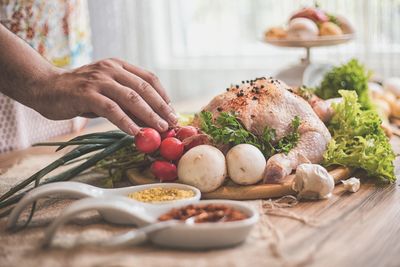MENU PLANING TIPS
To get ahead you must stay ahead. That in a nutshell is how the better-run restaurants can serve their customers every day and in style. No super-duper secret management formula needed. Just ask any kitchen-savvy manager and she (or he) will tell you that menu planning is the key to kitchen success—and to customer satisfaction. So, how is menu planning done? Here are a few tips from HospitalityNet and Hospitality Genie.
Location, location. Menu planning starts with location. The where in the address book dictates what’s on the menu. If the restaurant is in a blue-collar neighborhood such as Greenpoint, Brooklyn, scrambled eggs with beluga caviar probably won’t be a roaring success, but pepperoni pizza probably would. Even then, variety and a taste of the unique should always be options.
Theme-a-majig. Menu planning also involves theme setting. That is, a restaurant should have a theme or feel of its own to distinguish it from others and to set the tone for the menu. Having a menu that’s in harmony with its ambiance establishes a bond between the diner and the menu—and helps make for a good dining experience. More important, it also makes choosing what items to put on the menu a lot easier.
Order and no disorder. Professional restaurant managers use a schedule to order supplies in advance. This not only prevents shortages but also makes kitchen operations more efficient and a lot smoother. Ordering in advance requires knowing how much of what (ingredients, condiments, cooking consumables, etc.) the kitchen consumes over a fixed period, how much can be safely stored given the kitchen’s current storage and refrigeration capacities, and the expiration and best-before dates of the food items.
Bring back feedback. There’s no perfect menu, but a good menu can be a perfect menu in progress. A good menu is the evolving result of theme, appropriateness to location, choices, and customer feedback. When you know the demand, you know the needed supply. When you know what the diner wants, you can keep the menu fresh, interesting, and in demand. So, go social. Get feedback via Facebook, Twitter, Instagram, and Snapchat. Or go old school—a suggestion box would do, too.
Food costs. What good is a menu full of great choices when the item prices will just scare the customers away? True, you should make a profit, but food costs should balance profit with ingredient cost, production cost, and quality, the last being the most important because in the restaurant business you can’t afford to sacrifice it for the other factors. Think of it this way: when it comes to quality of food, there’s no profit in a big profit. Keeping costs down is a must.
Control Waste. Think of every item that ends up in the dumpster as a dollar out of your pocket. A very good way to reduce food waste in the kitchen is to keep a measuring bucket and make sure any food that is discarded goes in the bucket. Record results daily. This will be incredibly useful when you reference your menu against your waste at the end of the day. You can track these points and understand items you may over-ordering.
Of course, menu planning is just one of the things to know to be successful in the restaurant business. One other important factor is food safety. To know more about it, visit Learn2Serve.com and enroll in the fully online Food Safety Manager Training and Certification Exam programs.
Posted by:

menu planing, restaurant business, food franchise, food industry,
